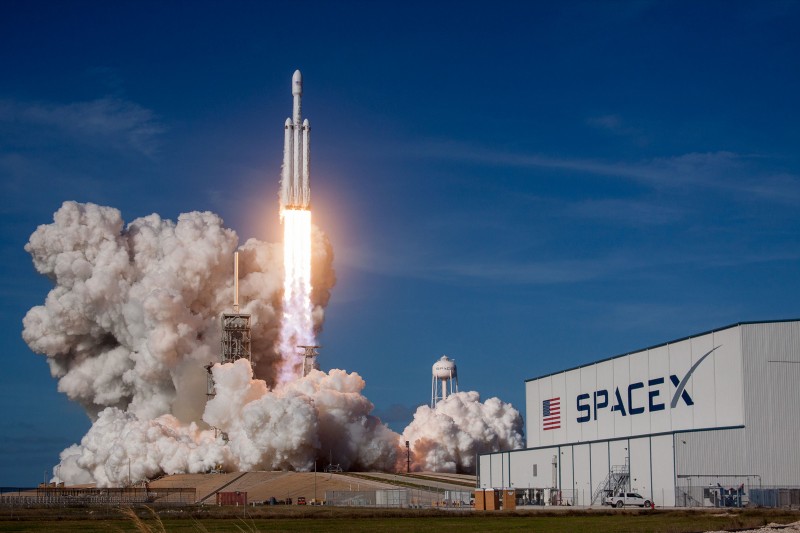
New Delhi:- Europe, which has temporarily lost access to its own space, plans to increase its reliance on SpaceX for launching major scientific and navigation spacecraft while also working to restore launch capabilities.
Ariane 5's final successful launch on July 5 means Europa is temporarily unable to put its payload into orbit. Ariane 5's successor, Ariane 6, is still in development and looks increasingly unlikely to be ready for its first launch before 2024. Following Russia's invasion of Ukraine in February 2022, the Soyuz is no longer available in Europe.
The Vega-C remained on the ground after a failed launch in December 2022, originally scheduled to return to flight later this year during a static firing test of the rocket's Zefiro 40 engine on June 28. has been postponed due to an anomaly.
Also Read:- NASA Unveils Groundbreaking Experiments to Investigate Solar Corona During 2024 Total Solar Eclipse
The original version of Vega without the Zefiro 40 is scheduled to launch again in September, but most of the launches listed in the Vega Manifesto are of the more powerful Vega C. European start-ups such as Isar Aerospace and Rocket Factory Augsburg are working on it. It is mounted on a small launch vehicle and its first flight could take place before the end of the year. However, for larger payloads, European organizations have few options in the short term.
In response to this situation, the European Space Agency announced in October 2022 that two missions would be transferred to SpaceX's Falcon 9. The first of these, the Euclid astronomy mission, was originally scheduled to launch on a Soyuz, but launched on July 1 from Cape Canaveral, Fla., on a Falcon 9. The Hera asteroid mission will initially be realized on Ariane 6 and will launch on Falcon 9 in October 2024.
Also Read:- NASA's MAVEN Mission Uncovers Martian Mysteries with Spectacular Ultraviolet Images
Other European missions may also fly the Falcon 9. At a press conference on June 29 after the ESA Council meeting, the ESA announced that the Earth Cloud, Aerosol and Radiation Explorer (EarthCARE) mission was transferred from the Soyuz to the Vega-C last October and replaced by a Falcon 9 flight in 2024. It announced that it is likely to land in the second quarter.
The announcement coincided with news of the Zefiro-40 test anomaly, but ESA Executive Director Josef Aschbacher said the change was not directly related to the Zefiro-40, but rather its failed launch last December. said it had to do with the resizing of EarthCARE, which would have required a fix. Mounts and houses the Vega C payload fairing.
"With these two factors in mind, I have asked the Inspector General to reassess the situation," he said at a news conference. "The conclusion of this IG evaluation for me was a recommendation that he not fly the Vega-C." It was based on Vega-C error checking.
Also Read:- NASA's Revolution into Airplanes demonstrates sustainability
At the same press conference, ESA officials said they were also working with SpaceX on launching up to four Galileo satellites with nine Falcons. "We are in ongoing negotiations with SpaceX and hope to reach an agreement soon," said Javier Benedict, director of navigation at the ESA. A prerequisite for this is securing the conclusion of negotiations with SpaceX and the approval of a security agreement between the European Union and SpaceX.
In a July 1 interview after Euclid's launch, Ashbacher said it was up to the European Commission to decide when and how the Galileo satellites would be launched. "We have provided all the technical information that the committee has on launcher compatibility," he said. "Now it's up to them to make the decision."
Also Read:- NASA's Jet Propulsion Laboratory Develops Groundbreaking AI Assistant to Support Astronauts in Space
He noted that Euclid is not the first ESA to use Falcon 9. Sentinel 6A, also known as Sentinel 6 Michael Freilich, is a joint US-European earth science mission launched aboard Falcon 9 in November 2020. ESA astronauts have also flown on the Crew Dragon mission. However, in these cases, the launches were procured and monitored by NASA, not ESA.
After launching the Ariana 5 Europe has relied on SpaceX for the further launch of the Ariana 6 on the Falcon 9 by October 2024 and has been told SpaceX to bridge the gap for the launch.